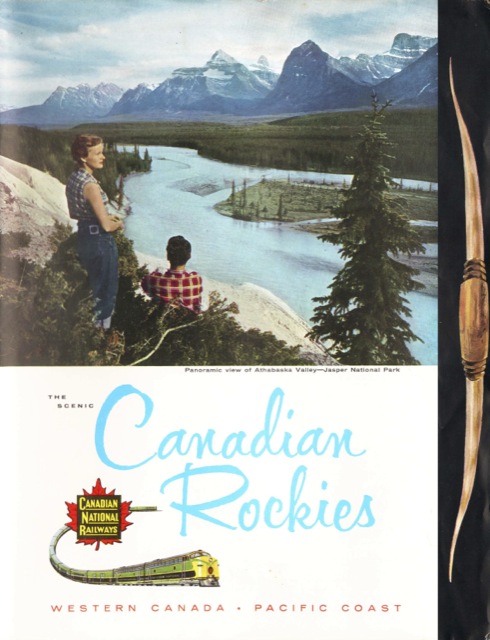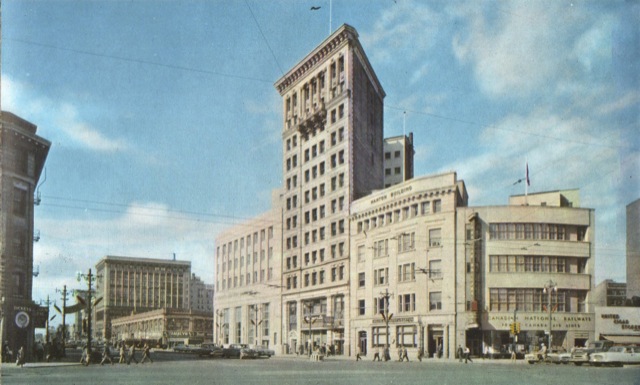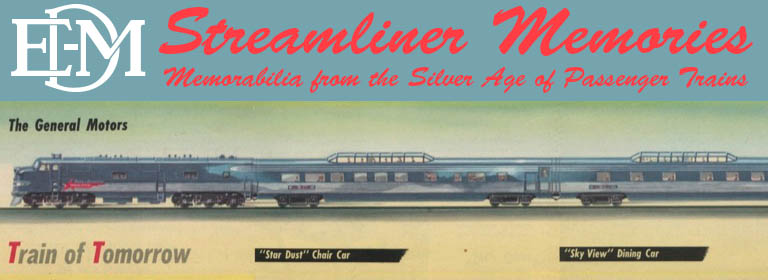This large brochure folds up so that an image of a beautiful wooden Indian bow appears behind the cover scene of a young couple overlooking the Athabasca River in Jasper National Park. This seems like a clever idea except for the fact that the bow has nothing to do with the rest of the brochure and can only serve to remind potential travelers of the Bow River and Banff Indian Days, both on rival Canadian Pacific.
 Click image to download a 7.3-MB pdf of this brochure, or click here to download a 4.8-MB ocr version.
Click image to download a 7.3-MB pdf of this brochure, or click here to download a 4.8-MB ocr version.
In addition to ten color photos of the Rockies and Jasper Park, this brochure also has photos of Winnipeg, Saskatoon, Edmonton, Vancouver, and Victoria. With the possible exception of Victoria, none of these photos are particularly attractive or inviting; most are aerials and the Saskatoon and Edmonton photos could easily have been switched and few would have noticed the error.

Click image for a larger view of this 1958 street scene.
The photo of Winnipeg is an unromantic view of the center of the prairie province’s financial district. Google’s Streetview reveals that the four foreground buildings have been replaced by a massive skyscraper, which is perhaps a testament to the vitality of a city that most Canadians think is little better than Siberia. However, no matter how vital, it’s hard to imagine why CN would think a picture of this area would attract people to ride its trains to the Canadian Rockies.


The Winnipeg street scene does have a reason. The low four story building on the right is the CN’s “integrated” ticket office for the railroad, steamship line, and airline. I imagine it was included to show the modern CN office building. I think the whole idea of showing the aerial views of the Canadian Plains cities was precisely so people could see that they weren’t in Siberia. Look, we even have skyscrapers! This was pretty common in smallish post war cities because it showed how cosmopolitan the city was. My town of 13,000 has one four story building downtown, and almost all the pictures of downtown during the this period centered on that building because it was the closest thing we had to a skyscraper. Tall buildings and belching smokestacks were signs of prosperity then.
Jim